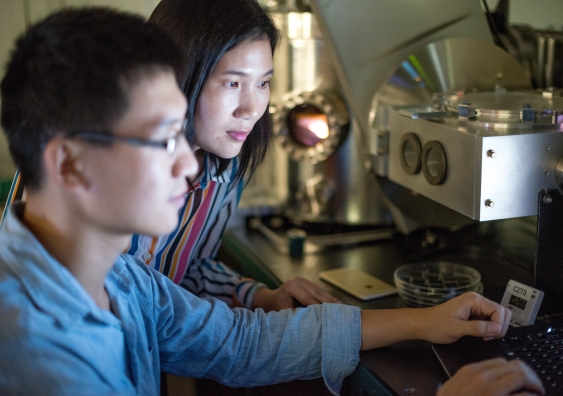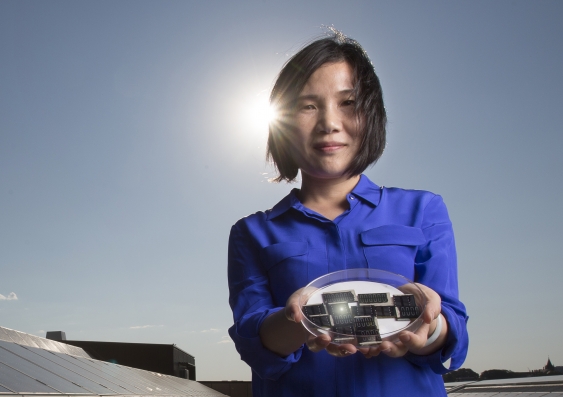A flexible future
Thin, flexible panels that will revolutionise how we use solar energy are on the drawing board at UNSW.
Thin, flexible panels that will revolutionise how we use solar energy are on the drawing board at UNSW.

Imagine a future in which thin, flexible solar panels cover the surfaces of cars and buildings, powering their activities.
Xiaojing Hao, associate professor and Scientia fellow in the School of Photovoltaic and Renewable Energy Engineering, and her team, are building such cells made of kesterite photovoltaics.
Containing copper, zinc, tin and sulphur, they are cheaper to make and more environmentally friendly than other thin-film varieties on the market, some of which contain toxic materials, such as cadmium, or rare elements, such as indium and tellurium.
There are significant industrial applications for flexible, thin photovoltaic cells. But a key challenge has been their limited capacity to generate energy with a comparable efficiency and cost to that of conventional silicon solar panels.
In 2017, A/Prof Hao’s team built a kesterite photovoltaic cell that attained 11 per cent efficiency. This set a world record – a fourth for the team – and was the first time that the 10 per cent efficiency threshold was broken for this type of cell. This work was published in the Nature Energy journal in 2018.
“For each efficiency change, we need a step-change technology to make it happen,” says A/Prof Hao.
She hopes to improve the efficiency of kesterite photovoltaic cells to close to 20 per cent in the next five years.
To do this, her team needs to work out how to prevent the common defects in the lattice of the kesterite material. The reasons for these defects are not yet well understood. However, once corrected, the electrical quality of the material – the main barrier to efficiency – will improve.
Exciting findings from 2018 point to some new directions to control the defects and improve the performance of kesterite cells. The plan is to apply for Australian Research Council funding to delve deeper and publish some of these results in 2019.

Dr Xiaojing Hao of UNSW's Australian Centre for Advanced Photovoltaics.
In 2017, A/Prof Hao was one of 18 young scientists selected from more than 1000 applicants to take up one of UNSW’s inaugural Scientia fellowships. Last year, she won two prestigious prizes: the $5000 Premier’s Prize for Energy Innovation from the state of New South Wales and the $3000 UNSW Engineering Faculty Dean’s Award for Excellence in Research. A/Prof Hao’s enthusiasm for discovery is given free rein at UNSW.
“I love to explore the unknowns and deal with challenges. Achieving research progress, particularly through challenging work, brings me deep fulfilment.”
This story was published on the Times Higher Education website. Associate Professor Xiaojing Hao will be attending the THE Research Excellence Summit: Asia-Pacific at UNSW Sydney, 19-21 February.